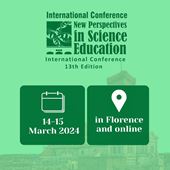To Approach Animal Rights in Primary School: a Challenge in Science Education
Marta Maia, Centro Interdisciplinar de Estudos Educacionais (Portugal)
António Almeida, Centro Interdisciplinar de Estudos Educacionais (Portugal)
Abstract
The present case study was based on the will to address the issue of Animal Rights in Primary School within the scope of Science Education. The study was based on the following questions: How to develop the awareness about animal rights in children? How does this approach contribute to develop their critical and reflective thinking?
The study involved 23 children of the 2nd year of schooling, aged 7 to 8 years old. Since their reading competence was still under development, this fact determined the methodological options. Thus, the children were interviewed one by one in two different moments, intercalated by an intervention plan focused on the Animal Rights issue. The interview consisted of showing a set of images in which the right of the animals was respected in some cases and violated in some others. Before questioning them about this aspect, each child had to describe what he/she saw in the image, to check the understanding of the message expressed in each photo. The intervention plan included the following themes: i) the concept of rights, through the confrontation between children’s rights and animal rights; ii) the approach of the Declaration of Animal Rights; iii) the approach of two situations where animal rights were not respected: shows with aquatic mammals and animals in the circus. The themes were debated in class, and the teacher played the role of moderator of the discussions.
In the second interview, after the intervention, the majority of the children were able to analyze the situations present in the images in a more critical way, mobilizing a greater number of arguments than in the first interview. However, this occurred not only with the situations that were approached in class during the intervention plan. They have also increased their understanding about a greater number of situations where animal rights are violated. Overall, children were able to identify the majority of the situations in which their well-being was being affected. Therefore, the present study can be an influential example for other approaches in other educational contexts concerning the subject under discussion.
Keywords: Animal Rights, Primary School, Science Education, Critical Thinking;
References
[1] Galvão, P. “Os Animais têm Direitos? Perspectivas e Argumentos”, Lisboa, Dinalivro, 2010.
[2] Kant, I. “Fundamentação da Metafísica dos Costumes”, Lisboa, Edições 70, 1995.
[3] Regan, T. “Defending Animal Rights”, Chicago, University of Illinois Press, 2001.
[4] Gomes, C. “Direitos dos Animais: Um Ramo Emergente?”, Revista Jurídica Luso Brasileira, 2, 359-380, 2015.
[5] Regan; T. “The case for Animal Rights”, Los Angeles, University of California Press, 1983.
[6] UNESCO, “Universal declaration of animal rights”, available on: https://constitutii.files.wordpress.com/2016/06/file-id-607.pdf, 1978.
[7] Coutinho, C., Sousa, A., Dias, A., Bessa, F., Ferreira, M., & Vieira, S. “Investigação‐acção: metodologia preferencial nas práticas educativas”, Revista Psicologia, Educação e Cultura, 13 (2), 355-379, 2009.
[8] Coutinho, C. “Metodologia de Investigação em Ciências Sociais e Humanas. Teoria e Prática”, Lisboa, Almedina, 2011.
 New Perspectives in Science Education
New Perspectives in Science Education


























